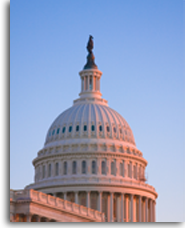In “How Biden Might Recover” at The Atlantic, Ronald Brownstein writes: “If the GOP renominates Trump, attitudes about the challenger might overshadow views about the incumbent to an unprecedented extent, the veteran GOP pollster Bill McInturff believes. McInturff told me that in his firm’s polling over the years, most voters usually say that when a president seeks reelection, their view about the incumbent is what most influences their decision about whom to support.
Brownstein notes further, “But in a recent national survey McInturff’s firm conducted with a Democratic partner for NBC, nearly three-fifths of voters said that their most important consideration in a Trump-Biden rematch would be their views of the former president….“I have never seen a number like this NBC result between an incumbent and ‘challenger,’” McInturff told me in an email. “If 2024 is a Biden versus Trump campaign, we are in uncharted waters.”
In addition, “Alan Abramowitz, an Emory University political scientist, said the principal reason presidents now appear more capable of surviving discontent about their performance is the rise of negative partisanship. That’s the phrase he and other political scientists use to describe a political environment in which many voters are motivated primarily by their belief that the other party represents an unacceptable threat to their values and vision of America. “Emphasizing the negative results of electing your opponent has become a way of unifying your party,” Abramowitz told me.”
However, “Jim Messina, the campaign manager for Barack Obama’s 2012 reelection, reflected the changing thinking when he told me he does not believe that Biden needs to reach majority approval to win another term. “I don’t think it’s a requirement,” Messina said. “It might be if we are dealing with an open race with two nonpresidents. People forget that they are both incumbents. Neither one of them is going to get to 50 percent in approval. What you are trying to drive is the choice.”….
Another consideration Browstein points out, “Trump has already laid out a much more militantly conservative and overtly authoritarian agenda than he ran on in 2016 or 2020. His proposals include the mass deportation of and internment camps for undocumented immigrants, gutting the civil service, invoking the Insurrection Act to quash public protests, and openly deploying the Justice Department against his political enemies. If Trump is the GOP nominee, Democratic advertising will ensure that voters in the decisive swing states are much more aware of his agenda and often-venomous rhetoric than they are today. (The Biden campaign has started issuing near-daily press releases calling out Trump’s most extreme proposals.).”
However, “In a recent national poll by Marquette University Law School, nearly twice as many voters said they trusted Trump rather than Biden to handle both the economy and immigration. The Democratic pollster Stanley B. Greenberg released a survey last week of the nine most competitive presidential states, in which even the Democratic “base of Blacks, Hispanics, Asians, LGBTQ+ community, Gen Z, millennials, unmarried and college women give Trump higher approval ratings than Biden.” Among all voters in those crucial states, the share that said they thought Trump did a good job as president was nearly 10 percentage points higher than the group that gives Biden good grades now.
“The problem for Trump’s team,” Brownstein adds, “is that he constantly pushes the boundaries of what the public might accept. Holding his strong current level of support in polls among Hispanics, for instance, may become much more difficult for Trump after Democrats spend more advertising dollars highlighting his plans to establish internment camps for undocumented immigrants, his refusal to rule out reprising his policy of separating migrant children from their parents, and his threats to use military force inside Mexico. Trump’s coming trials on 91 separate criminal charges will test the public’s tolerance in other ways: Even a recent New York Times/Siena College poll showing Trump leading Biden in most of the key swing states found that the results could flip if the former president is convicted.”
Brownstein concludes, “rump presents opponents with an almost endless list of vulnerabilities. But Biden’s own vulnerabilities have lifted Trump to a stronger position in recent polls than he achieved at any point in the 2020 race. These polls aren’t prophecies of how voters will make their decisions next November if they are forced to choose again between Biden and Trump. But they are a measure of how much difficult work Biden has ahead to win either a referendum or a choice against the man he ousted four years ago.”






